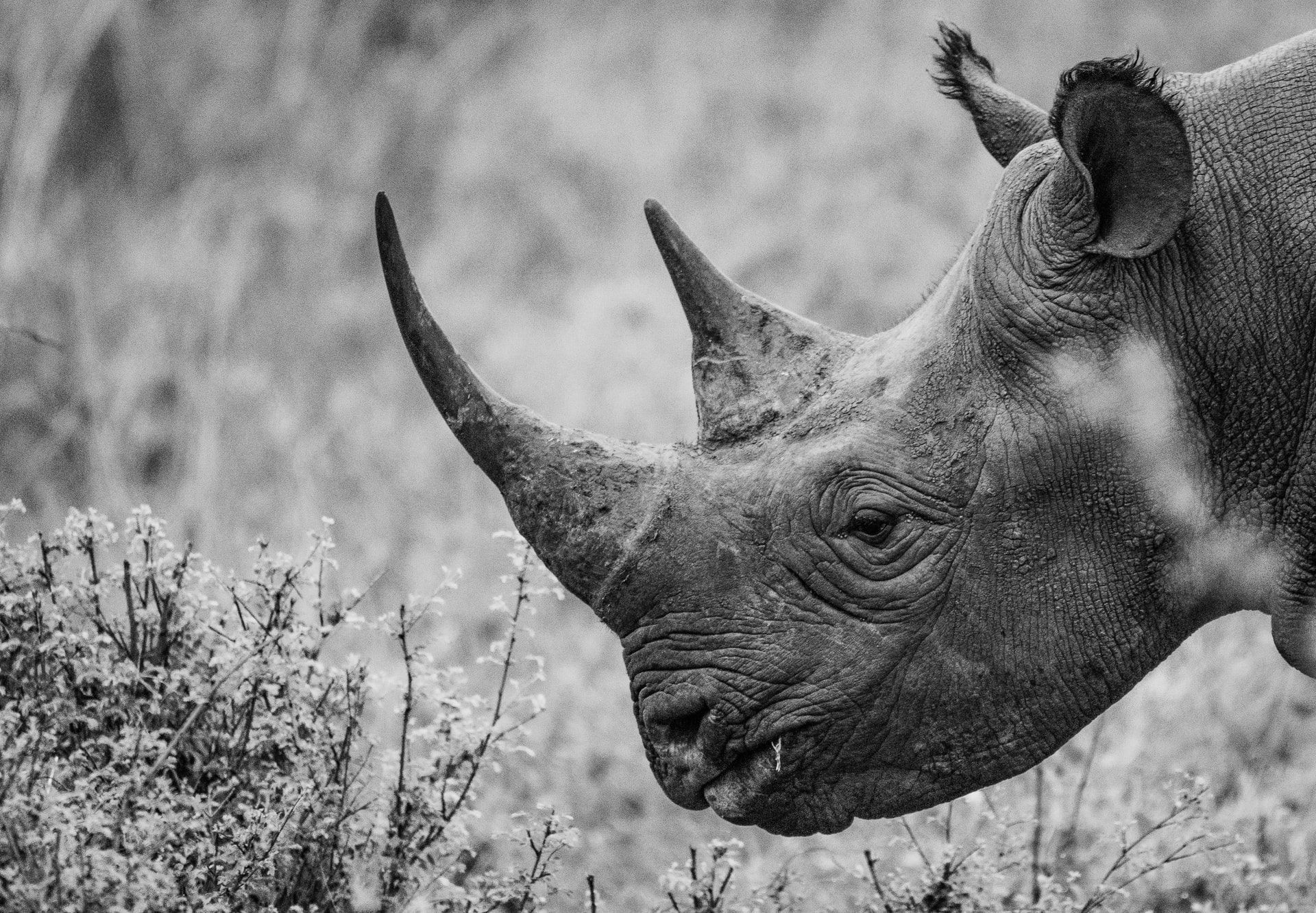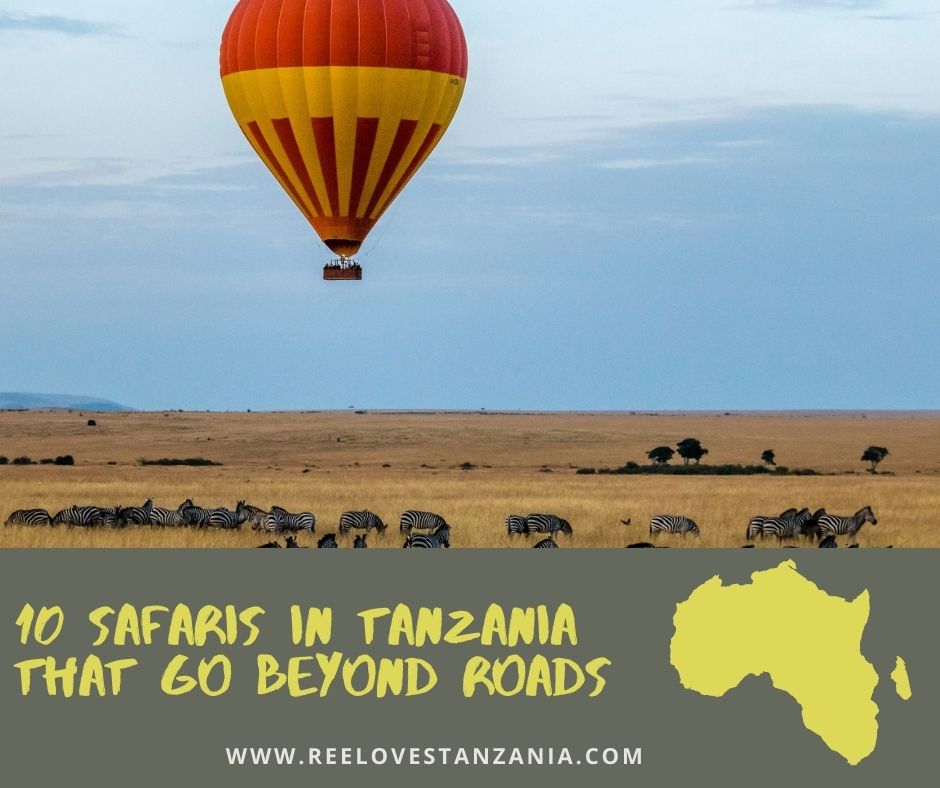If you’re looking to go on a safari in East Africa, you have probably seen ‘The Big Five’ advertised. Safari operators will promise they can take you to see The Big Five, or guarantee this or that National Park will deliver sightings. But sometimes, they don’t tell you what The Big Five are, or how they got this name.
The Big Five Are Not:
- the largest animals in Africa
- the most endangered animals in Africa
- the biggest predators in Africa
- the most difficult to spot animals in Africa
The Big Five are the top five most dangerous animals in Africa to hunt on foot. Yep, the term comes from trophy hunting — which Ree Loves Tanzania is NOT a big fan of.
Photography safaris – yes! Hunting safaris – big NO.
The Big Five are the
elephant, rhinoceros, lion, leopard and cape buffalo.
Elephant
Often referred to as “gentle giants”, elephants are not the first animal that comes to mind when I think “dangerous”. But, then I remember how they are in real-life, when I’ve viewed them on safari.
African Elephants are MASSIVE. You cannot overestimate their size, or over-describe these enormous animals. They are the largest land mammal, with legs as thick as tree trunks, and bodies larger than safari cars. If threatened, they may be one of the most terrifying things to behold. They are fiercely protective of their young. They do not need sharp teeth to defend themselves, they have body weight, big feet and dangerous tusks.
However, an unthreatened elephant? An elephant who is relaxed, enjoying lunch in the shade of trees in Manyara National Park? Or leisurely wading in the watering holes of Tarangire National Park? That is a beautiful, powerful animal that can take your breath away.

Photo by Ree Pashley
elephant facts
- they are matriarchal – meaning the herds are female-led
- an adult male can weigh as much as 6 tons!
- there are two species of elephants: African and Asian. Other sub-species include forest elephants and savannah elephants.
- African elephants are easily distinguished by their ears – which are, interestingly, in the shape of the African continent
- according to WWF, almost 90% of all African elephants have been wiped out, due mostly to poaching and climate change.
Learn about a local program that is actively working to save elephants in Tanzania.
Rhinoceros
Rhinos have a distinct prehistoric look about them; their thick skin, oddly-placed horns and wide nostrils always remind me of dinosaurs. Rhinos are not my favorite of all the animals, but the first time I went on safari I was ecstatic to see a rhino – I rode that high all day, thrilled to see such a rare creature in the wild. Because they are fewer, more elusive, and difficult to spot, its especially exciting when you do see one in the wild.

rhinoceros facts
- there are 2 types of African rhinos and 3 types of Asian ones.
- African rhinos are Black rhinos and White rhinos, but the names are a result of confused English settlers – both types are actually grey in color.
- you’ll probably see then alone, but they tent to meet up with other rhinos around watering holes at night.
- unicorns do exist! 2 species of Asian rhinos are one-horned, and absolutely ** magical **.
- rhinos have bad eyesight. There are countless children’s stories in Tanzania about the rhino who needs glasses, or put his horns on wrong because he couldn’t see well, but the basis for these fictional tales is accurate, these guys DO have poor vision.
Lion

Photo by Ree Pashley
It doesn’t require much imagination to see why lions are in The Big Five, these guys are big, majestic and even a little scary – even if you are safely inside a safari car. In Tanzania, there are unique Tree Climbing Lions in Manyara National Park, and a pride that permanently resides in Ngorongoro Crater. Years ago, the prides in Serengeti National Park got so big that they became worrisome, and some members were moved to other parks to help control the lion population.
lion facts
- female lions are the hunters. While they are out, the male lions supervise the young.
- lions are the only big cats that reside in groups in the wild
- you can tell the age of an adult male by his mane; the longer and darker the hair of the mane, the older he is.
- lions are binge eaters – they feast on prey one day, and then may go two days without food entirely
- in Ngorongoro Crater, the resident herds of wildebeest and zebra mean easy pickings for the lions. It is common to see lions sleeping in the grass with herds leisurely grazing all around. Since lions don’t eat every day, even the prey can relax sometimes.
Leopard
Leopards are one of the more difficult animals to spot while on safari. An expert predator, they nimbly climb trees and camouflage perfectly with their surroundings. I think they are the most beautiful of all the big cats, but I wouldn’t one to meet one while on the prowl. I can certainly understand why they would be dangerous to hunt.

leopard facts
- leopards prefer to spend most of their time in trees – including when eating their prey. They carry carcasses up into trees to keep other predators from stealing their meal
- leopards can purr to show they are happy or satisfied
- like most cats, leopards are nocturnal and do most of their hunting at night
- leopards are often confused with cheetahs. There are two easy ways to tell the two apart: spots and eyes. Spots- cheetahs have dots, while leopards have markings called rosettes. Eyes – cheetahs have distinct black tear marks around and down from their eyes, leopards do not.
- they are not picky eaters, and have been known to eat just about anything – from porcupines, to monkeys – even snakes!
Cape Buffalo
Please don’t confuse Cape Buffalo with Asia’s Water Buffalo, they may be cousins, but these guys are bigger and more fierce. They have some resemblance to cows, and indeed are part o the bovine family, but don’t even think about milking one of these guys! Of all the animals listed in The Big Five, Cape Buffalo have a reputation for remembering and tracking down and charging any hunters who have threatened them.
These guys are big. They don’t go down with one, or even two bullets, and they do not forget the ones who tried to kill them and they will seek revenge. Which is why they have been given the nickname, “The Mafia” – they don’t forget and they do not forgive.

cape buffalo facts
- they are great swimmers
- you’ll probably see them with an oxpecker bird on their back. The birds eat ticks and insects off the buffalo (thus ridding them of parasites), and the buffalo happily obliges to feed the oxpecker. This is a classic ‘symbiotic relationship’ between animals.
- older bulls ‘retire’ and spend time on their own, away from a herd just relaxing and wading in mud. They are called “Dagga Boys”
- a group of buffalo have several names: herd, gang or even an obstinacy.
- they are one of the most dangerous of all The Big Five, because they seek revenge and they give no warning signal before attacking. Hunters who have used traps to ensnare Cape Buffalo have reported the buffalo feigned death, only to leap up and tramped the hunters when they started to open the trap.
These guys are intelligent! so, watch them from afar and take photos, no gunshots.

While trophy hunting has greatly declined across the continent, the name ‘The Big Five’ has stuck. No matter where the term originated, these five are some of the most impressive animals in the world.
I have yet to meet someone who doesn’t tremble a little when they see an adult elephant up close, or catch their breath when they spy a leopard with their own eyes. Even Cape Buffalo have a certain elegance to them, especially if you take a walking safari in Arusha National Park with them grazing just a few hundred meters away.
The Big Five of Africa are an impressive bunch and definitely worth getting a shot of – with your camera, of course.









